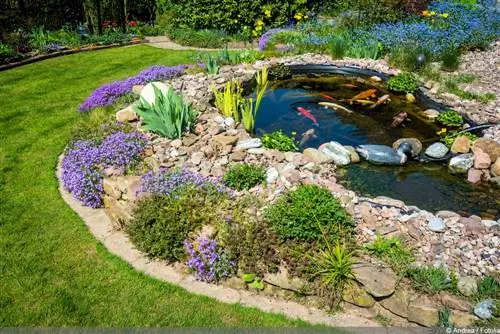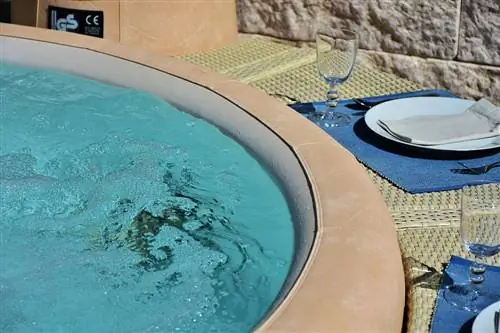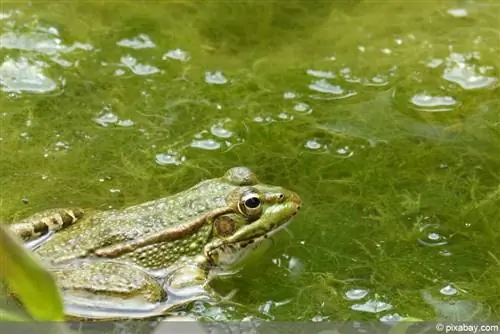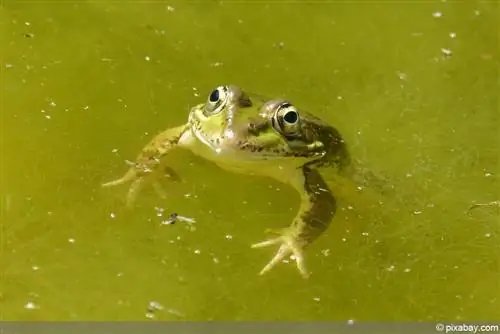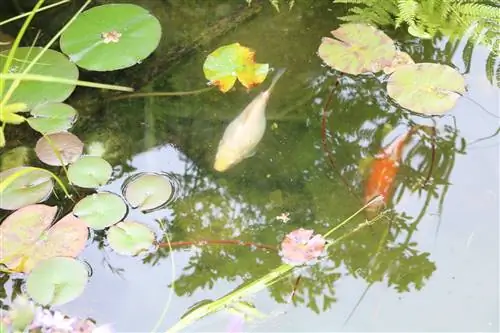- Author admin [email protected].
- Public 2023-12-17 03:39.
- Last modified 2025-01-24 12:45.
Green water is usually caused by algae, brown water by mud and cloudy water by suspended particles that not even filters can get out.
How does clouding occur?
Cloudy water is often due to algae, which arise naturally, and a muddy pond bottom. Movement on the ground and in the pond stirs up mud and causes cloudiness. Algae are not just annoying. When exposed to sunlight, algae produce oxygen. This is important for a he althy pond. Algae carpets are well suited as a hiding place for amphibians and other aquatic animals.
Prevention
- Prevention is done by regularly checking the water quality.
- You can also vacuum mud from the floor.
- Algae can also be filtered out and vacuumed up. Small algae colonies are not yet a problem. If you do something about them regularly, they won't be able to multiply.
- Lots of plants in the pond also help keep the water clear. This requires creatures such as snails and crabs that eat dead parts of plants. The creatures usually settle on their own or are introduced with the plants.
- Algae feed on plant remains, fish droppings and fish food. You shouldn't feed the fish too much. This creates a whole cycle.
- Do not fertilize plants!
- Do not add any pond bottom, it always causes the water to become cloudy!
Proper pond planting
- With the right choice of plants, algae can be prevented.
- Plants are competitors for algae. Both consume nutrients. If plants consume them, algae cannot survive.
- A third of the water surface should be planted. This helps to maintain biological balance.
- The following are particularly suitable for pond planting: marsh waterstar, curly pondweed, crab claw, Brazilian milfoil, hornleaf or water aloe.
- Floating leaf plants shade the pond. This protects it from excessive water heating. Algae growth is higher in warm water.
Clarify the pond
- Algae can be fished out (landing net)
- Another method is winding. You take a broom handle, wrap it with sandpaper and stick it into the middle of the clumps of algae. Then it is carefully turned. The algae stick to the paper and wrap around it. This is how you can lift them out. A very gentle method that does not interfere with the biological balance.
- UV lamps are also helpful. The algae are irradiated with UV light. But you can only do this in animal-free ponds.
- It is also ideal to change the water regularly. You drain the water and add new water. Rainwater is best suited.
- Insert pond filter. This removes fish excretions.
- Do not use pond bottom, but plant the plants in gravel.
- Replace the pond bottom. Granules like lava grit are good.
- Not too many fish in the pond. Better to fish out a few and sell them or give them away.
- Use mussels and other water clarifiers!


